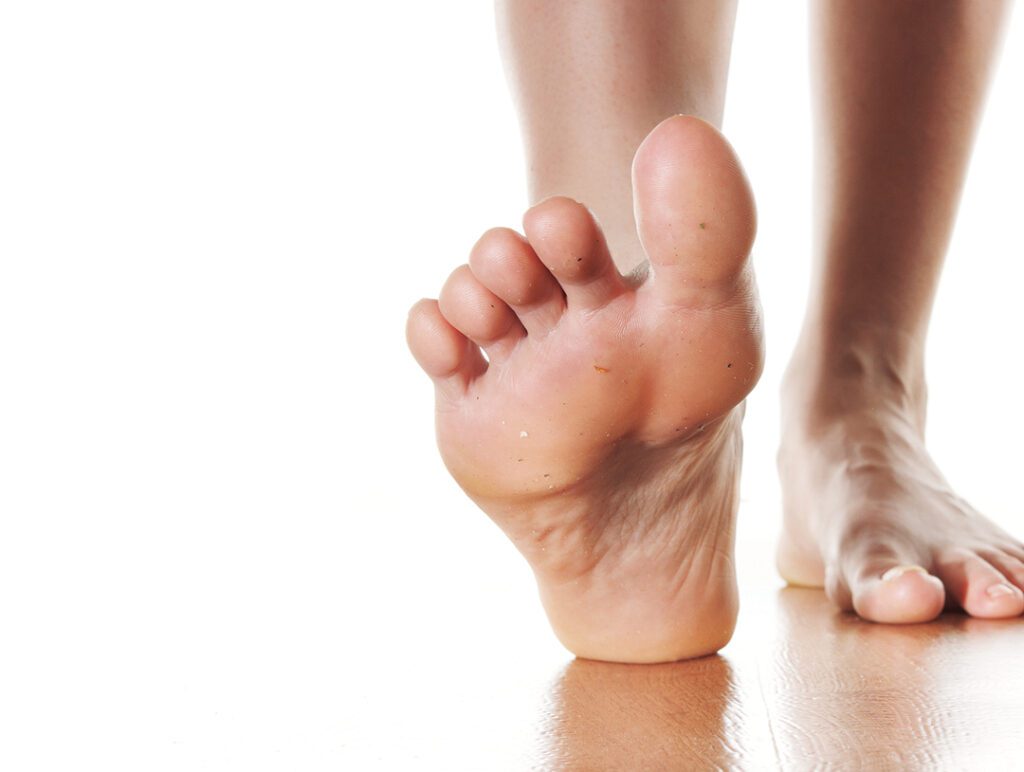AdventHealth’s Dr. Narmo Ortiz Sheds Light on Foot and Heel Pain
by TERESA SCIHFFER
Oh, my aching feet! We’ve all had those days when our dogs are just a-barkin’ and it seems like no matter what we do or how we move, our feet are just crying out for a little TLC. How do you know when your foot pain is something serious enough to warrant professional attention? Our feet support us through our work days, leisure time, and everything in between, so we ought to know how to treat them right and give them the support they need in return.
We talked with Dr. Narmo Ortiz, DPM, a Haines City podiatrist with AdventHealth, to learn what we can do to take proper care of our feet and how to know when it’s time to seek professional help.
Ortiz explains that heel pain is one of the most common types of foot pain that bring patients to his office. Often, heel pain can be caused by plantar fasciitis, Ortiz explains. Plantar fasciitis occurs when a thick band of tissue that runs across the bottom of the foot becomes inflamed.
“Another type of heel pain that people can suffer from is a nerve pain that can happen to one of the nerves that feed the heel area, mainly an area close to the heel called the tarsal tunnel,” Ortiz says.
Just as people can suffer from carpal tunnel syndrome, the same thing can happen in the foot.
“Inside the heel and the ankle, there’s an area called the tarsal tunnel that carries a nerve that can become entrapped or compressed by inflammation.” Ortiz explains. “That can also give nerve pain to the area which can radiate to the heel, causing pain.”
The most common cause of plantar fasciitis is simply the anatomy of the patient’s foot. A flat foot or a high arch can cause undue strain on the plantar fascia or plantar ligament because that ligament has fibers that extend from the heel bone to the ball of the foot. A foot with a high arch needs proper support, so shoes that lack that arch support can leave that ligament vulnerable to trauma from the absorbed shock of simply walking day-to-day. In a foot that is very flat, that ligament is overstretched, and in time, without proper corrective support, it will become completely strained. The result is the chronic inflammation known as plantar fasciitis.
Fortunately, there are easy steps people with heel pain can take to relieve and correct plantar fasciitis.
“The most common treatment is to use a good arch support or an orthotic. Sometimes you can get an over-the-counter orthotic, although we don’t encourage their use because some brands out there are not the most appropriate,” Oriz says.
“That’s why I encourage people to visit a podiatrist to get advice on which brands are appropriate and endorsed by our association.”
The best orthotic insert will be one that is custom-molded to the shape of a patient’s own foot. While an orthotic is the most common treatment for heel pain, an oral inflammatory or cortisone injection could be prescribed. A night splint is a corrective device that can be utilized to stretch the Achilles tendon, thereby relieving tension on that ligament. Stretching exercises can also help. If physical therapy is recommended, it may involve ultrasound electrical stimulation. If none of these conservative approaches are effective, surgery is available as a last resort.
Ortiz goes on to describe other types of foot pain that drive patients to seek out a podiatrist, saying that often pain that is felt in the back of the heel is caused by bone spurs. The Achilles tendon, or heel cord, attaches to the back of the heel, and a strain to that tendon can also cause pain in that region.
Deformities, such as flat feet, bunions, and hammertoes, can all cause great discomfort. A common condition that occurs in the ball of the foot is called Morton’s neuroma, which is an inflammation of the nerve, most commonly the one between the third and the fourth toes. It is a benign tumor of the nerve that can become quite painful when swollen.
Chronic health conditions also can take their toll on the feet. Diabetes, for example, can cause poor circulation or neuropathy in the lower limbs. This is one reason that managing a chronic condition is so crucial to preserving all of the body’s systems. Diabetics should check in with their podiatrist at least twice a year to try to prevent severe complications with their feet.
So what can patients do to protect and preserve the wellness and functionality of their feet? One important piece of advice for those living or wintering in Florida is to resist the urge to wear flip-flops. These types of shoes offer practically no support. The same is true for going barefoot.
Ortiz emphasizes the importance of wearing proper footwear with adequate support for the pressure points of your foot at all reasonable times in order to avoid potential injury and strain to the foot and ankle. Many accidents happen in the home, so wearing shoes around the house is advisable. It’s even more important if a person has neuropathy, which can inhibit their ability to feel pain and increase the risk of injury.
